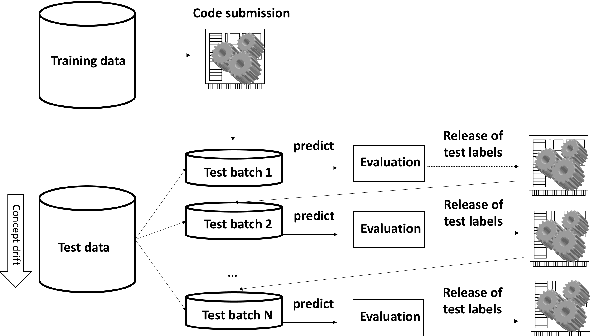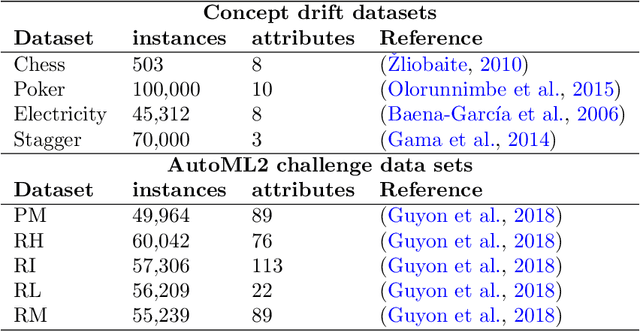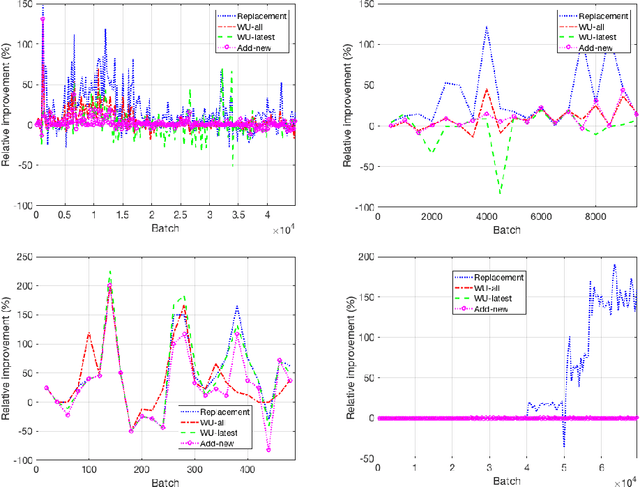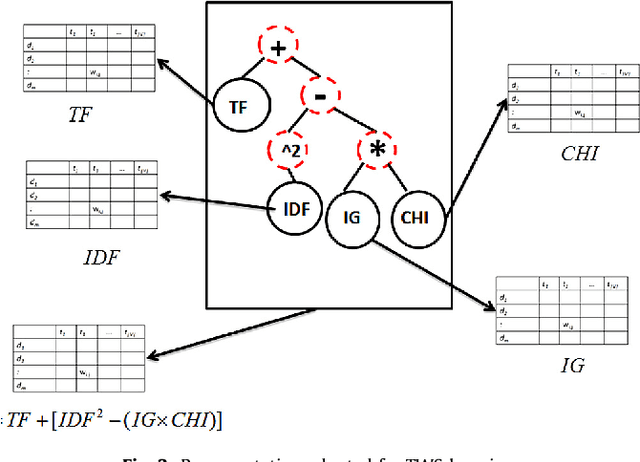Eduardo F. Morales
Towards AutoML in the presence of Drift: first results
Jul 24, 2019



Abstract:Research progress in AutoML has lead to state of the art solutions that can cope quite wellwith supervised learning task, e.g., classification with AutoSklearn. However, so far thesesystems do not take into account the changing nature of evolving data over time (i.e., theystill assume i.i.d. data); even when this sort of domains are increasingly available in realapplications (e.g., spam filtering, user preferences, etc.). We describe a first attempt to de-velop an AutoML solution for scenarios in which data distribution changes relatively slowlyover time and in which the problem is approached in a lifelong learning setting. We extendAuto-Sklearn with sound and intuitive mechanisms that allow it to cope with this sort ofproblems. The extended Auto-Sklearn is combined with concept drift detection techniquesthat allow it to automatically determine when the initial models have to be adapted. Wereport experimental results in benchmark data from AutoML competitions that adhere tothis scenario. Results demonstrate the effectiveness of the proposed methodology.
Term-Weighting Learning via Genetic Programming for Text Classification
Oct 06, 2014



Abstract:This paper describes a novel approach to learning term-weighting schemes (TWSs) in the context of text classification. In text mining a TWS determines the way in which documents will be represented in a vector space model, before applying a classifier. Whereas acceptable performance has been obtained with standard TWSs (e.g., Boolean and term-frequency schemes), the definition of TWSs has been traditionally an art. Further, it is still a difficult task to determine what is the best TWS for a particular problem and it is not clear yet, whether better schemes, than those currently available, can be generated by combining known TWS. We propose in this article a genetic program that aims at learning effective TWSs that can improve the performance of current schemes in text classification. The genetic program learns how to combine a set of basic units to give rise to discriminative TWSs. We report an extensive experimental study comprising data sets from thematic and non-thematic text classification as well as from image classification. Our study shows the validity of the proposed method; in fact, we show that TWSs learned with the genetic program outperform traditional schemes and other TWSs proposed in recent works. Further, we show that TWSs learned from a specific domain can be effectively used for other tasks.
 Add to Chrome
Add to Chrome Add to Firefox
Add to Firefox Add to Edge
Add to Edge